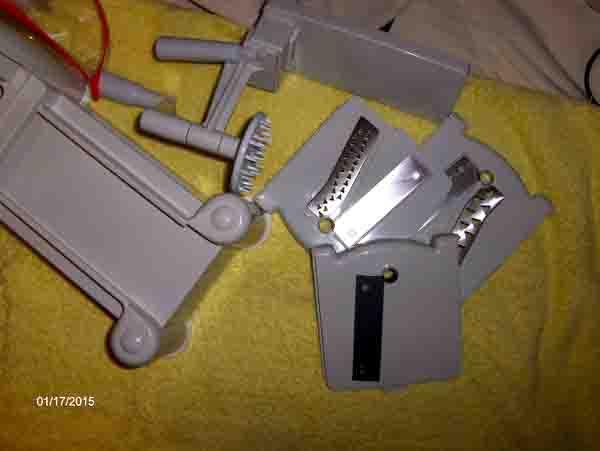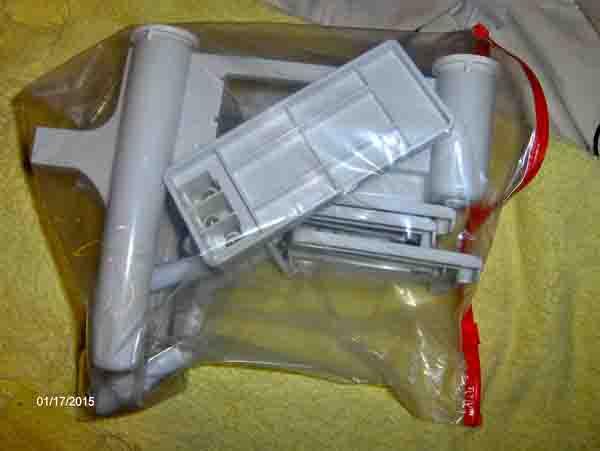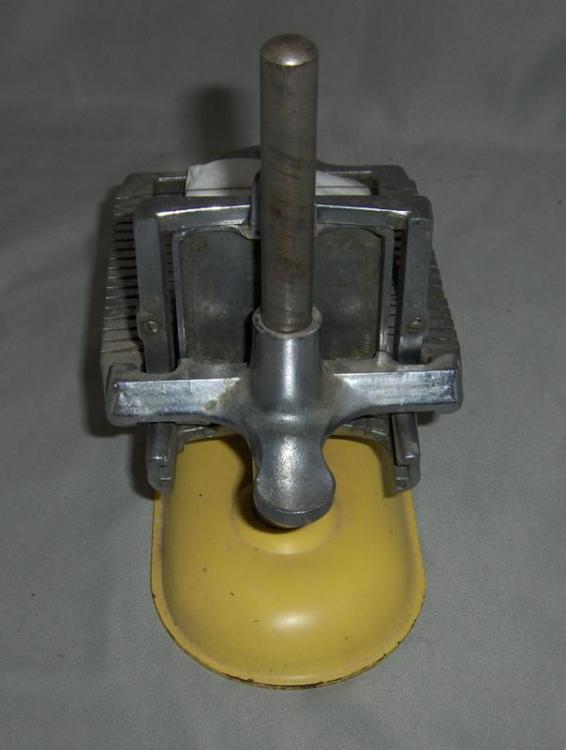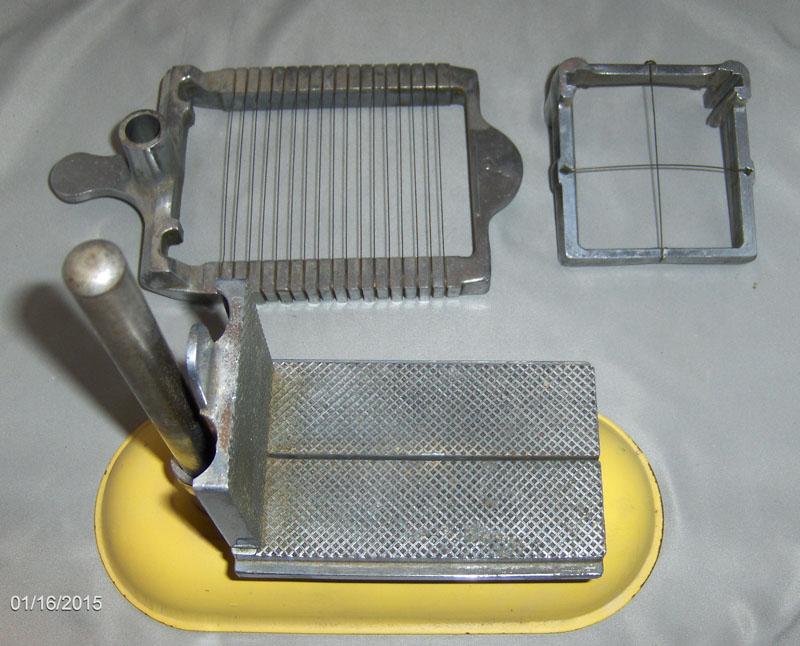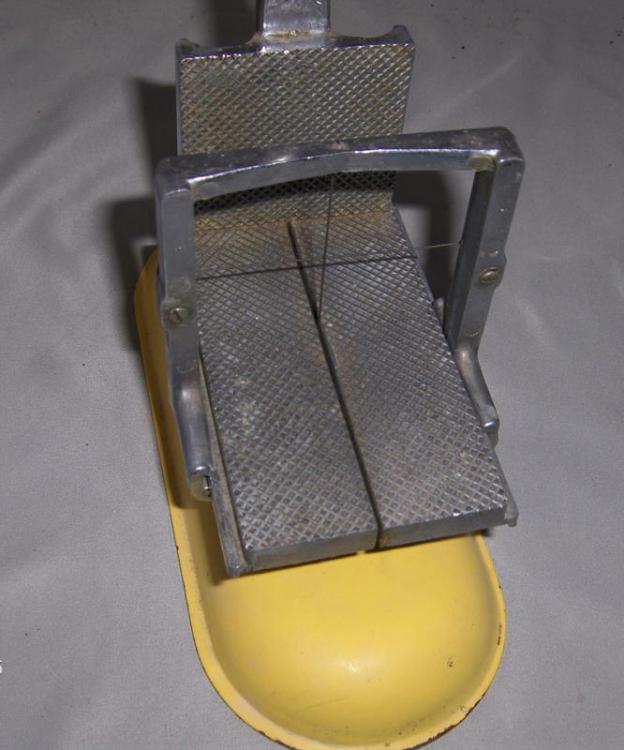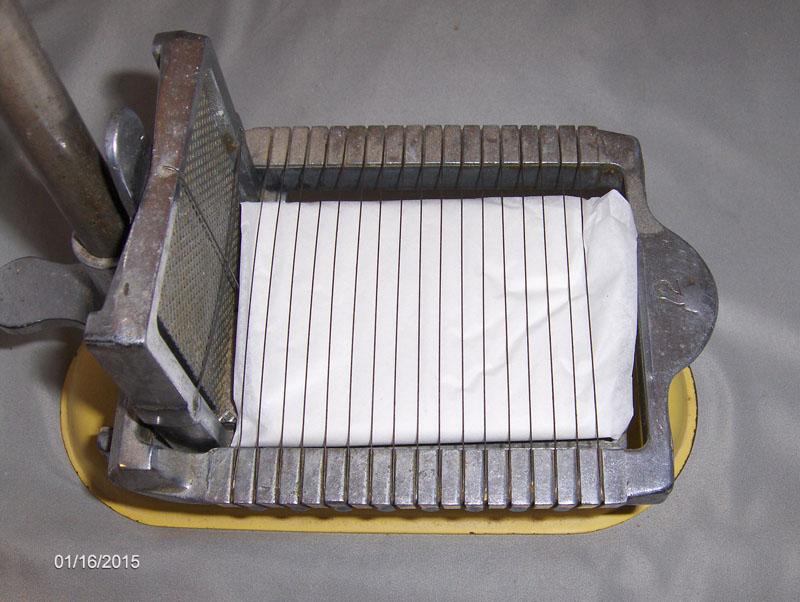-
Posts
11,033 -
Joined
-
Last visited
Content Type
Profiles
Forums
Store
Help Articles
Everything posted by andiesenji
-
A timely item just posted on FaceBook re: crispy shredded potatoes. Check it out. Now haul out you waffle iron and have a go at using it to obtain the ultimate crispy string potato "cake" ... I have made rostii using one of my vintage sandwich presses, with quite good results. Since I also have "several" waffle irons, this will be an upcoming experiment - for the sweet potatoes. And incidentally, I found one of the Paderno spiralizers in a plastic bag hanging in the "hall" between the pantry and the laundry room. (Was searching for something else. I know I never used it and don't recall buying it. It may have been a "hand-me-down" from someone who didn't know what to do with it - I get a lot of things that way. Since there are no instructions, with it, and I always keep them, I'm sure that's the story. Rather than dig out the big metal one, I think I will give this one a try to see how well it works. Still haven't found the vertical Benriner but it is somewhere around...
-

Yard Sale, Thrift Store, Junk Heap Shopping (Part 2)
andiesenji replied to a topic in Kitchen Consumer
-

Cook's Illustrated Cookbook: is it worth buying?
andiesenji replied to a topic in Cookbooks & References
I have several of the CI cookbooks and have enjoyed cooking and baking from them. In fact, I just discovered I have two of the "Family Baking Book" (500+ pages) so will be putting one on ebay shortly. I've used the "Quick Family Cookbook" quite a lot. Many very good recipe. -

Yard Sale, Thrift Store, Junk Heap Shopping (Part 2)
andiesenji replied to a topic in Kitchen Consumer
-
Leifheit makes this spiral slicer that produces the vegetable "ribbons" as shown in the photo. It does not do the julienne cuts.
-
To avoid the problem of the spiralized vegetables "stewing" in the moisture they produce, I have one of the perforated pizza pans and put the strings on that over another pan so the juices drip through and they bake nicely, crisping to the degree I want depending on how long I leve them in the oven. I take them out about half way through and toss to make sure the oil and seasonings are well distributed.
-
-
The ribbon-cut blade on my machine does make an "endless" ribbon that is easy to form around things, not at all like the stack of rounds shown in your photo. It essentially "peels" a long strip off the vegetable. I had mine mounted on the edge of a heavy butcher block so I could place a bowl of water under the "output" end - so the ribbon would fall into the water, which kept the more brittle types from breaking.
-
-
Several years ago I bought 6 rolls of this tape - bright orange - which has high visibility in the freezer (or wherever) and anything that I want to access repeatedly gets a strip of this tape, with the contents written on it. When so much stuff in the freezer is monochrome, anything with a strip of this tape really stands out. I also use strips of it on storage containers with stuff that I know I will be needing seasonally and when I used to travel, the important luggage got a strip of this on each side so I could direct where to stash the ones that would need to come out of the van first. I have never found a similar product that sticks as well or lasts as long.
-
I usually freeze part of the batch - vac sealed - but most go into oil for the oven roasting, which I love so much. I'm not sure it is the freezing that affects the strength. I have found that the "bite" of the peeled garlic itself is milder than much of the regular garlic I buy. It may be the variety of garlic, which, compared to garlic types I have grown, is a soft-neck variety, which tend to be milder than the hard-neck varieties.
-
They lasted for years, were wiped down with vinegar/water and hung to dry. If they began to leak, it was not difficult to add more beeswax, iron and refresh them. There was one huge sheet that covered the entire top of the kitchen work table that was used for rolling out pastries, especially the sticky ones. Incidentally, the exact same method was used to make rainproof coats and capes going back centuries. My great grandmother said that the coachmen when she was a girl, wore "greatcoats" with capes over the shoulders that were waxed - just heavier material. Even now you can buy waxed coats and jackets, popular in the UK and Australia, NZ, so the process is still being used and those that use beeswax are a lot more "green" than the plastic stuff we see here. However, because of the cost of beeswax, many of the manufacturers now use paraffin.
-
The Benriner vertical unit holds the vegetables firmly, even the hard ones. There are several YouTube videos shows this in operation. Here's one.
-
I got my spiral slicer years before even the vertical Benriner was available here. As I recall it was rather expensive and it is larger than the plastic one I saw in a local store. Mine is a Nemco It is not exactly like this one but very close. Mine has 3 blades - ribbon, fine and medium strings. Mine has a larger base plate made to be bolted to a counter top. I had it bolted to a big, heavy butcher block on a rolling cart.
-
Here's a link to a terrific recipe for sweet potato fries.
-
It's really funny, but I remember when I was a child (1940s) there was beeswaxed muslin used in the kitchen for all kinds of tasks. The muslin was washed to remove the sizing, stretched on frames and the beeswax rubbed into the weave. One of the women would then iron the muslin so the wax would melt into and meld with the fabric. Some was formed into "bags" and some doughs that required long rising were hung on the wall behind the kitchen range - where it was warm. The stuff was used in the "spring house" to hold soft cheeses, butter and etc. It seems that what was old is new again...
-
I've had a spiral cutter for many years - I think it is a Nemco - all steel and really "heavy duty" - I used it when I was catering back in the '80s and early '90s. I used to make a lot of sweet potato strings for deep frying - also jicama for "slaw" as well as the other root vegetables that lend themselves to this treatment. Celery root, rutabaga, parsnips as well as some of the more "exotic" roots - yuca, for instance and daikon radish - also for slaw, often paired with the jicama, carrots and cabbage. The strings steam quickly, if you want to add them to dishes, only takes two or three minutes for them to reach the desired degree of "doneness" at least for my taste. They also are perfect for stir-fry. You can wrap things in the flat ribbons but many, such as potatoes, need a quick dip in hot water so they "relax" a bit and don't break when bent. You can do a spiral or a criss-cross "mummy wrap" around beef or sausage patties or meatloaf "piggies" which bake beautifully brown and crisp on top in the oven.
-

Interesting Christmas Gifts Received 2014
andiesenji replied to a topic in Food Traditions & Culture
Elk. A "terminal point" of an antler. The structure is different in deer and reindeer. -
I generally only use the pan on high heat for certain applications. I have many other pans for other purposes. I probably don't use it as much as many do as I live along and cook mostly for myself. Some fatty meats that have already been "cooked" - such as ham - but need quick finishing without further cooking (which tends to make ham rubbery) needs to be quickly seared and that is what I do most often in the pan without any oil. I heat the pan until a drop of water litteraly explodes when it hits the surface, slap on the ham steak, wait till it "releases" after less than a minute, flip it over and leave it for another minute. It takes just a tad longer for the second side to sear because the steak causes a bit of cooling of the surface. Then I reduce the heat, wait a few minutes and cook my eggs. It doesn't take long to get the "feel" of the pan. And, unlike most non-stick pans, there will be fond development with meats, etc.
-
I notice the difference when I grind the hominy and the regular white dent corn. I sift the ground product and the regular, non nixtamalized corn produces a lot more "chaff" than the hominy and I can only assume this is from the outer hull that is washed away in the nextamalization process.
-
I believe it is just the import ban that was struck down, not the ban on raising geese and ducks for their livers.
-
I like it because unless the fruits are mashed and crushed, the juice is quite clear and produces beautiful jellies. However I also add it to whole fruits for additional flavor in jams, preserves and when I do combinations. A friend's father, now no longer with us, used this method in a much larger vessel, to juice wild blackberries to add to his homemade wine. He was Italian but his wife was a Sami - they had met at one of the Olympics in the 50s - and she taught him how to extract juices with the steamer. She told me about gathering cloudberries back home and having to have a couple of men along with noisemakers to drive the bears away so it would be safe for the women to pick them. They made juice, jams, jellies and dried the berries for use during the winter. She said they had tried growing them here (in the Tehachapi mountain area) but had little success, even back home they were difficult to cultivate. She did give me a jar of cloudberry jam, sent from home, which was delicious.
-
I now have a Bosch - 6 years old now - but for 20 years I had a commercial under counter dishwasher - Hobart - which really spoiled me - the 90 second cycle was noisy but over quickly. The only difficulty was moving the trays in and out when my arthritis became too severe. So I gave it to my friend who owns a bakery/cafe and he bought me the Bosch. The Bosch is so quiet I can't tell that it's running most of the time - only when the water begins draining.


